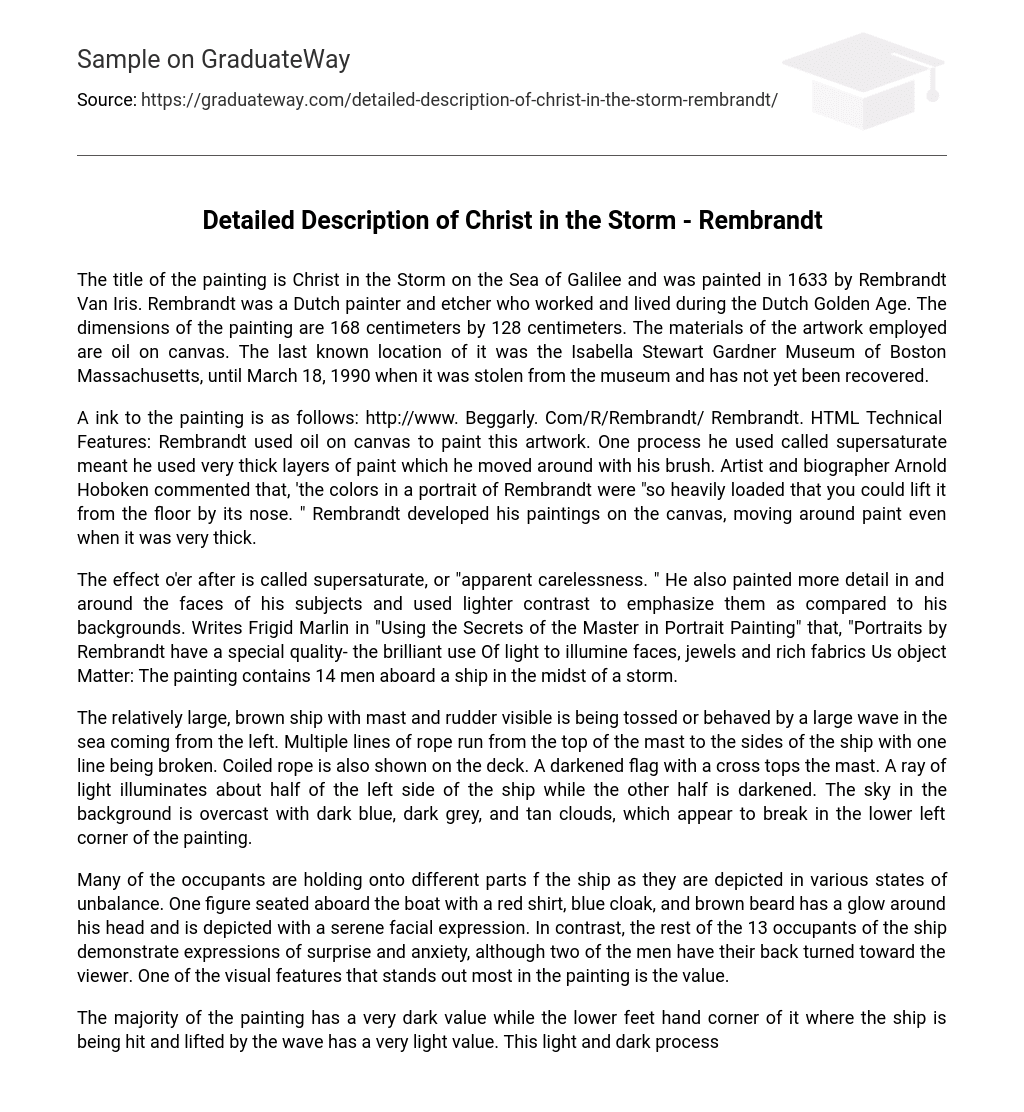The title of the painting is Christ in the Storm on the Sea of Galilee and was painted in 1633 by Rembrandt Van Iris. Rembrandt was a Dutch painter and etcher who worked and lived during the Dutch Golden Age. The dimensions of the painting are 168 centimeters by 128 centimeters. The materials of the artwork employed are oil on canvas. The last known location of it was the Isabella Stewart Gardner Museum of Boston Massachusetts, until March 18, 1990 when it was stolen from the museum and has not yet been recovered.
A ink to the painting is as follows: http://www. Beggarly. Com/R/Rembrandt/ Rembrandt. HTML Technical Features: Rembrandt used oil on canvas to paint this artwork. One process he used called supersaturate meant he used very thick layers of paint which he moved around with his brush. Artist and biographer Arnold Hoboken commented that, ‘the colors in a portrait of Rembrandt were “so heavily loaded that you could lift it from the floor by its nose. ” Rembrandt developed his paintings on the canvas, moving around paint even when it was very thick.
The effect o’er after is called supersaturate, or “apparent carelessness. ” He also painted more detail in and around the faces of his subjects and used lighter contrast to emphasize them as compared to his backgrounds. Writes Frigid Marlin in “Using the Secrets of the Master in Portrait Painting” that, “Portraits by Rembrandt have a special quality- the brilliant use Of light to illumine faces, jewels and rich fabrics Us object Matter: The painting contains 14 men aboard a ship in the midst of a storm.
The relatively large, brown ship with mast and rudder visible is being tossed or behaved by a large wave in the sea coming from the left. Multiple lines of rope run from the top of the mast to the sides of the ship with one line being broken. Coiled rope is also shown on the deck. A darkened flag with a cross tops the mast. A ray of light illuminates about half of the left side of the ship while the other half is darkened. The sky in the background is overcast with dark blue, dark grey, and tan clouds, which appear to break in the lower left corner of the painting.
Many of the occupants are holding onto different parts f the ship as they are depicted in various states of unbalance. One figure seated aboard the boat with a red shirt, blue cloak, and brown beard has a glow around his head and is depicted with a serene facial expression. In contrast, the rest of the 13 occupants of the ship demonstrate expressions of surprise and anxiety, although two of the men have their back turned toward the viewer. One of the visual features that stands out most in the painting is the value.
The majority of the painting has a very dark value while the lower feet hand corner of it where the ship is being hit and lifted by the wave has a very light value. This light and dark process was likely taught to Rembrandt and is known as chiaroscuro (light and darkness) technique. According to Functionaries. Com many of Rembrandt paintings employ this technique. “Rembrandt background composition remains dark, while his subject is illuminated in a manner which makes the image appear nearly three dimensional.





